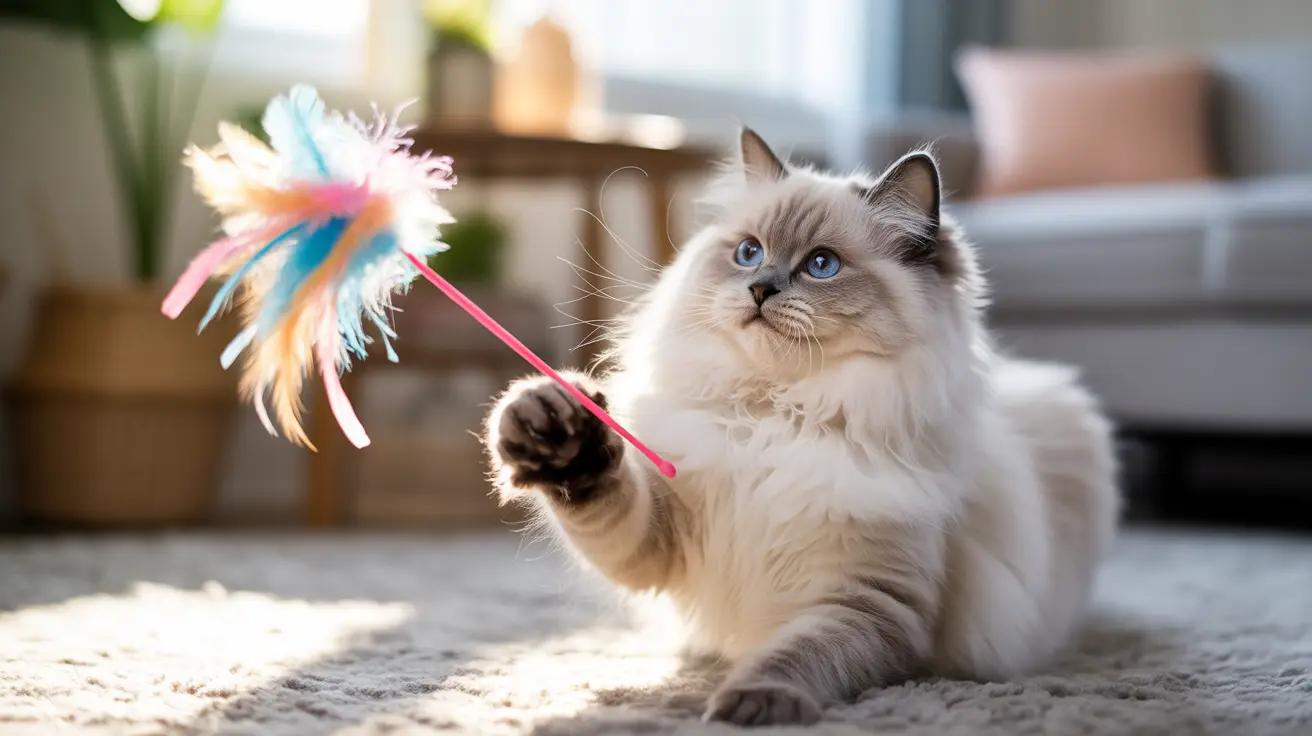Getting a cat's attention requires understanding feline psychology and using the right approach. Whether you're trying to bond with a new cat or strengthen your relationship with a longtime companion, knowing effective techniques can make all the difference in successful cat communication.
In this comprehensive guide, we'll explore proven methods to attract your cat's attention positively, while respecting their natural behaviors and preferences. From interactive play to vocal cues, you'll learn how to engage your feline friend in ways that strengthen your bond and provide healthy stimulation.
Understanding Your Cat's Attention Signals
Cats naturally communicate through a sophisticated system of body language, vocalizations, and behavioral cues. Before attempting to get your cat's attention, it's essential to recognize when they're receptive to interaction.
A cat who's open to engagement may display signs such as:
- Tail held high with a slight curve at the tip
- Ears pointed forward
- Slow blinking
- Gentle chirping or trilling sounds
- Following you around the house
Effective Methods to Attract Your Cat's Interest
Using Sound and Voice
Cats are highly responsive to certain sounds, particularly those in higher frequencies. Many cats react positively to:
- Gentle clicking or kissing sounds
- Soft calling of their name
- The classic "pspsps" sound
- Rustling of treat bags or food containers
Interactive Play and Toys
Play is one of the most effective ways to engage your cat's attention. Focus on toys that trigger their natural hunting instincts:
- Wand toys with feathers or strings
- Small balls that mimic prey movement
- Crinkly toys that make interesting sounds
- Laser pointers (always end with a physical toy they can "catch")
Creating Positive Associations
Building reliable attention-getting cues requires consistency and positive reinforcement. When your cat responds to your calls or gestures, reward them with:
- High-value treats
- Gentle petting in their favorite spots
- Interactive playtime
- Verbal praise in a soft, encouraging tone
Timing and Environment Matter
The success of your attention-getting efforts often depends on timing and environmental factors. Consider these aspects:
- Choose quiet times when your cat is naturally active
- Ensure the environment is calm and non-threatening
- Respect your cat's personal space
- Pay attention to their daily rhythms and routines
Frequently Asked Questions
What are the most effective ways to get a cat's attention without causing stress?
The most stress-free methods include using gentle sounds, offering treats, and engaging in interactive play. Always allow the cat to approach you, and avoid loud noises or sudden movements that might startle them.
How can I use treats and play to encourage my cat to come when called?
Consistently pair your cat's name or a specific sound with treats or playtime. Start in short distances and gradually increase the distance. Always reward them when they respond to maintain the positive association.
Why does my cat meow or paw at me to get attention, and how should I respond?
Cats meow and paw for attention because these behaviors have successfully earned human response in the past. Respond to positive attention-seeking but avoid reinforcing demanding behavior by waiting for calm moments to provide attention.
How can understanding cat body language help me better engage with my feline friend?
Reading your cat's body language helps you identify when they're receptive to interaction and when they need space. Look for relaxed postures, forward-facing ears, and slow blinks as signs they're open to engagement.
What should I do if my cat's attention-seeking behavior becomes excessive or disruptive?
If attention-seeking becomes excessive, establish regular play and feeding schedules, provide environmental enrichment, and consult a veterinarian to rule out medical issues. Avoid reinforcing negative behaviors by maintaining consistent responses.
Conclusion
Successfully getting your cat's attention involves understanding their individual personality, respecting their boundaries, and using positive reinforcement consistently. By implementing these expert-recommended techniques and remaining patient, you'll develop a stronger bond with your feline companion while ensuring their emotional and physical needs are met.






